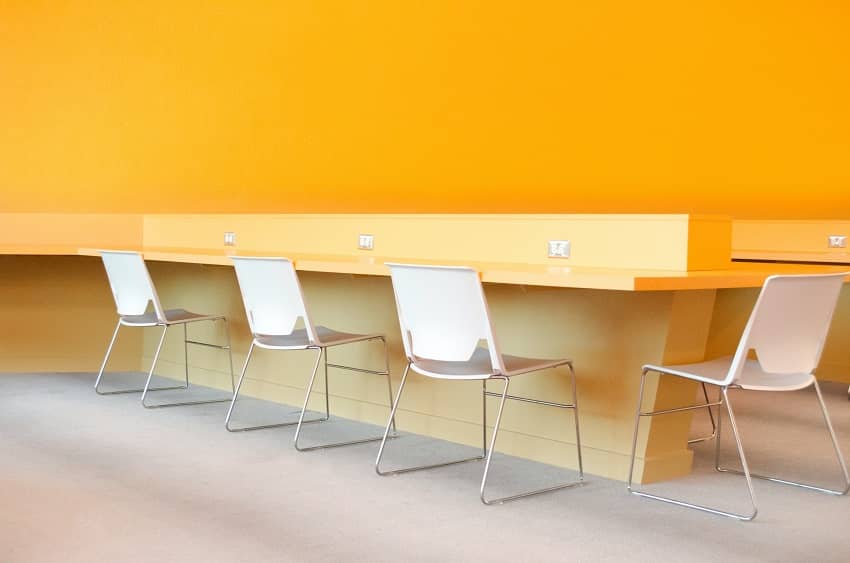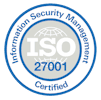The first documented history of an office space dates back to ancient Rome where spaces were allocated to carry out official work.
In her article, ‘How the Office was Invented’, journalist Lucy Kellway explains, “Many people might think of office-bound life as a modern phenomenon, but there’s a long history of people chained to their desks.”
The first modern workspace can be traced back to the 15th century when monks created the “Scriptorium”, a cubicle-esque desk designed for copying manuscripts.
When talking about the history of the modern office, we cannot but talk about the creation of the cubicles in the 1970s. Accidentally crafted by American inventor Robert Propst, the cubicles made the staff feel like rats in a cage.
However, the 21st Century modern workspace is certainly a sight to behold when it comes to design and aesthetics. With inspiration taken from the hospitality sector, co-working spaces, and silicon valley technology companies, offices nowadays are truly a work of art.
The cubicles have been replaced by expansive spaces, vibrant colours, and natural lighting & materials. This transformation had a profound effect on the happiness, productivity, and creativity of the staff.
Not to mention providing a significant wow factor for the clients who visit these modern works of architectural and design wonder.
Facilitiesbooking.com has been busy implementing room and desk booking solutions for companies who want to combine technology and design elements to create a flexible workspace.
Here, we highlight 9 essential spaces for the modern office:
Hot Desk
This is one of the most disruptive changes to the office space. Hot desks indicate a transformative redesign from the cubicle to a more open seating concept where no one is assigned a fixed desk. Anyone can sit anywhere and require a desk booking system that allows staff to reserve a desk and check into it when they arrive at the office.
The desks can be augmented with amenities such as VoIP phones, dual monitors, and other features that are activity specific. Staff must be able to filter the desks based on the type of amenities they need for the specific work that they want to do.
The booking system is able to provide different perspectives of the desk including layout or scheduler-based views. This allows staff to have a bird’s eye view of the office floor plan and reserve the desk.
Standing Workspace
Standing desks that are height adjustable are becoming popular. These ergonomic desks allow users to sit or stand while working. This is a welcome change from constantly sitting in the same place. Research shows that sitting long hours at a desk is detrimental to your health.
Telephone Booth
A telephone booth is a small soundproof enclosure that allows staff to have telephonic conversations. The configuration is for one or two people who want to have confidential calls or private conversations.
In an open office, taking a customer call or a personal call can be quite distracting to colleagues and offers no privacy to the caller. The telephone booth is a soundproof enclosure that can provide the privacy needed to get on calls.
Typically, usage of booths is restricted to a specific duration like an hour per person so that it is available to everyone.
Work Pods
Work Pods, like telephone booths, are soundproof enclosures that allow 2 or more people to have in-depth discussions. They usually have a central table with seating arrangements for 2 to 4 people. These configurations help where projectors and meeting rooms are not required.
Discussion Rooms
Discussion rooms are partially open spaces. They are meant for discussion with a group of people, usually more than 2. Such rooms are provided with a large table.
Unlike meeting rooms, discussion rooms are spaces with limited electronic amenities such as projectors and video conferencing. Sometimes they are also called breakout areas. They do have whiteboards and panels to discuss ideas and concepts with a group of people.
Lounges
A Lounge is a casual space to meet up in small or large groups in an informal setting. Lounges are becoming an essential component of the office space.
In the lounge, you and your staff can hang out in a casual manner and have team bonding sessions. A lounge is often connected with a pantry or even a bar for those after-office-hour gatherings. They can also be used to celebrate staff birthdays, work anniversaries, etc.
Meeting Rooms
A meeting room is a perfect place for meetings, discussions, and collaborations.
Meeting rooms nowadays are augmented with technologies like Video conferencing tools that allow near-personal experiences, digital whiteboards that allow collaborations, and related technologies that can adjust the meeting room mood depending on the type of meetings being conducted.
Cubicles/Fixed Desks
Cubicles have not totally become extinct. They are still alive, though in a different form.
They are used predominantly for work that requires a degree of privacy. Cubicles are also used for keeping items such as files, folders, etc. that cannot be moved around. Cubicles are usually occupied by people in finance, human resources, and legal.
Lockers
The need for lockers has increased with the adoption of hot desks.
Traditionally, designated desks and cubicles allow employees to lock away their personal belongings when going out for meetings or lunches. However, with hot desking, that is not convenient. So, lockers provide the space for staff to keep their belongings while they work at any desk.
Concluding
Companies redesigning their office space need to have a good understanding of the nature of work their staff will perform and design the office based on such activities.
We at ecobook.io understand your work needs and propose designs that are aligned with those needs.
So, what are you waiting for?
We will provide the technology.
Get started today!














